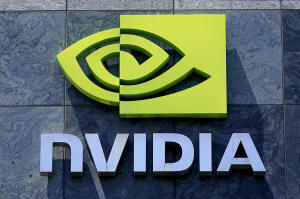Nvidia faces a reckoning as Chinese upstart raises questions about Wall
Street's darling
 Send a link to a friend
Send a link to a friend
 [January 29, 2025] By
STAN CHOE and SARAH PARVINI [January 29, 2025] By
STAN CHOE and SARAH PARVINI
NEW YORK (AP) — The superstar run for Nvidia’s stock the last few years
has been astonishing. So was its tumble Monday, which caused $595
billion in wealth to vanish. That’s about as much as PepsiCo, McDonalds,
Starbucks and Target are worth, combined.
Mostly known only in gaming and crypto circles a few years ago, Nvidia
burst into the zeitgeist after seeing its sales surge because customers
wanted its chips to train their chatbots and other artificial
intelligence products.
Nvidia became a household name as its stock more than tripled in 2023
and then more than doubled in 2024. Investors and analysts lauded CEO
Jensen Huang as the “Godfather of AI.” Nvidia grew into a $3
trillion-plus behemoth and traded places with titans like Apple to
become the most valuable company on Wall Street.
But that all came to a screeching halt Monday, at least for a moment,
after a Chinese upstart called DeepSeek said it had developed a
large-language model that could perform like ChatGPT and other U.S.
rivals, but by using far less computing power.
Here’s a look at how it all got to this point:
How did it become a market darling?
Nvidia’s roots began in gaming.
The Santa Clara, California-based tech company’s invention of the
graphics processor unit, or GPU, in 1999 helped spark the growth of the
PC gaming market and redefined computer graphics. Now Nvidia’s
specialized chips are key components that help power different forms of
artificial intelligence, including the latest generative AI chatbots
such as ChatGPT and Google’s Gemini.

Huang has dubbed AI “the next industrial revolution,” and Nvidia’s GPUs
are designed to perform artificial intelligence tasks faster and more
efficiently than general-purpose chips like CPUs. Tech giants are
snapping up Nvidia chips as they wade deeper into AI — a movement that’s
enabling cars to drive by themselves, and generating stories, art and
music.
The demand helped Nvidia's revenue grow by eye-popping levels, quarter
after quarter. On Feb. 23, 2023, after Nvidia breezed past analysts'
expectations for quarterly profit, Huang said that “AI is at an
inflection point, setting up for broad adoption reaching into every
industry.” The company's quarterly revenue at the time was $6.05
billion.
That ramped up to $7.19 billion just three months later and then nearly
doubled to $13.51 billion three months after that. Revenue has since
vaulted to $35.08 billion in the three months through October 2024.
[to top of second column] |

A sign for a Nvidia building is shown in Santa Clara, Calif., May
31, 2023. (AP Photo/Jeff Chiu, File)
 The company's stock price has
similarly soared, and its total market value quickly passed rivals
like Intel, Microsoft and others. Nvidia alone accounted for more
than a fifth of all of the S&P 500 index's total return last year.
No other stock came close, and it had more than triple Apple's
impact.
Buy an S&P 500 index fund today, and nearly 6 cents out of every $1
will go only into Nvidia. That leaves 94 cents for all the other 499
companies.
Is it still a darling?
Unlike the dot-com boom, real money was behind Nvidia’s surge, and
its stock price rose on expectations of ever more to come. Those
expectations came into question on Monday.
DeepSeek and its seemingly lower-cost operations raised worries
about whether companies would need to spend as many dollars on
Nvidia chips as previously thought. The concerns dragged down stocks
across the AI industry, including suppliers to the chip industry and
the power companies hoping to electrify the vast data centers that
were expected to get built to run those chips. But Nvidia was in the
spotlight because its stock has become the brightest symbol of the
AI bonanza.
Some on Wall Street saw Monday's nearly 17% plunge for Nvidia's
stock as an opportunity rather than a signal of pending doom, saying
the stock became more affordable. If AI does become cheaper to run,
it could open the door to new kinds of customers and software
innovations that could ultimately help the industry in the long
term.
“As for Nvidia itself, this isn’t the first time a major tech stock
has faced existential questions,” said John Belton, portfolio
manager at Gabelli Funds. “We’ve seen similar situations with
Microsoft, Apple, Meta, Google, Amazon, and Netflix — companies that
were once doubted but ultimately rebounded.”
DeepSeek's entrance certainly adds uncertainty to the entire AI
ecosystem, but it doesn't change the overwhelming momentum behind
the movement, according to Brian Colello, strategist at Morningstar.
“We believe that AI GPU demand still exceeds supply,” he wrote in a
report. "So, while slimmer models may enable greater development for
the same number of chips, we still think tech firms will continue to
buy all the GPUs they can as part of this AI 'gold rush.'"
For its part, Nvidia's stock wobbled between gains and losses early
Tuesday following its worst plunge since the 2020 COVID crash, and
then rallied a bit and ended the day nearly 9% higher.
All contents © copyright 2025 Associated Press. All rights reserved |